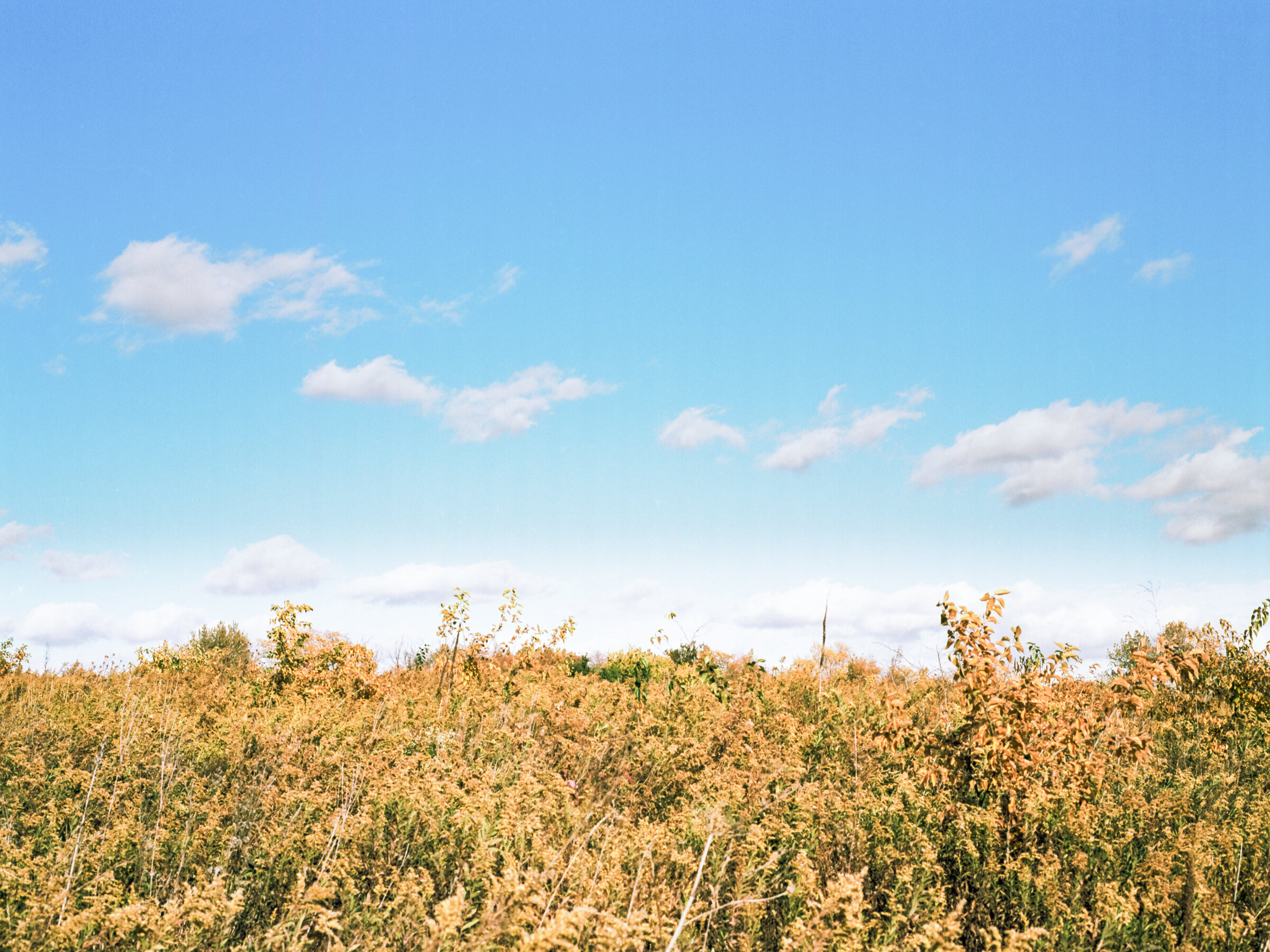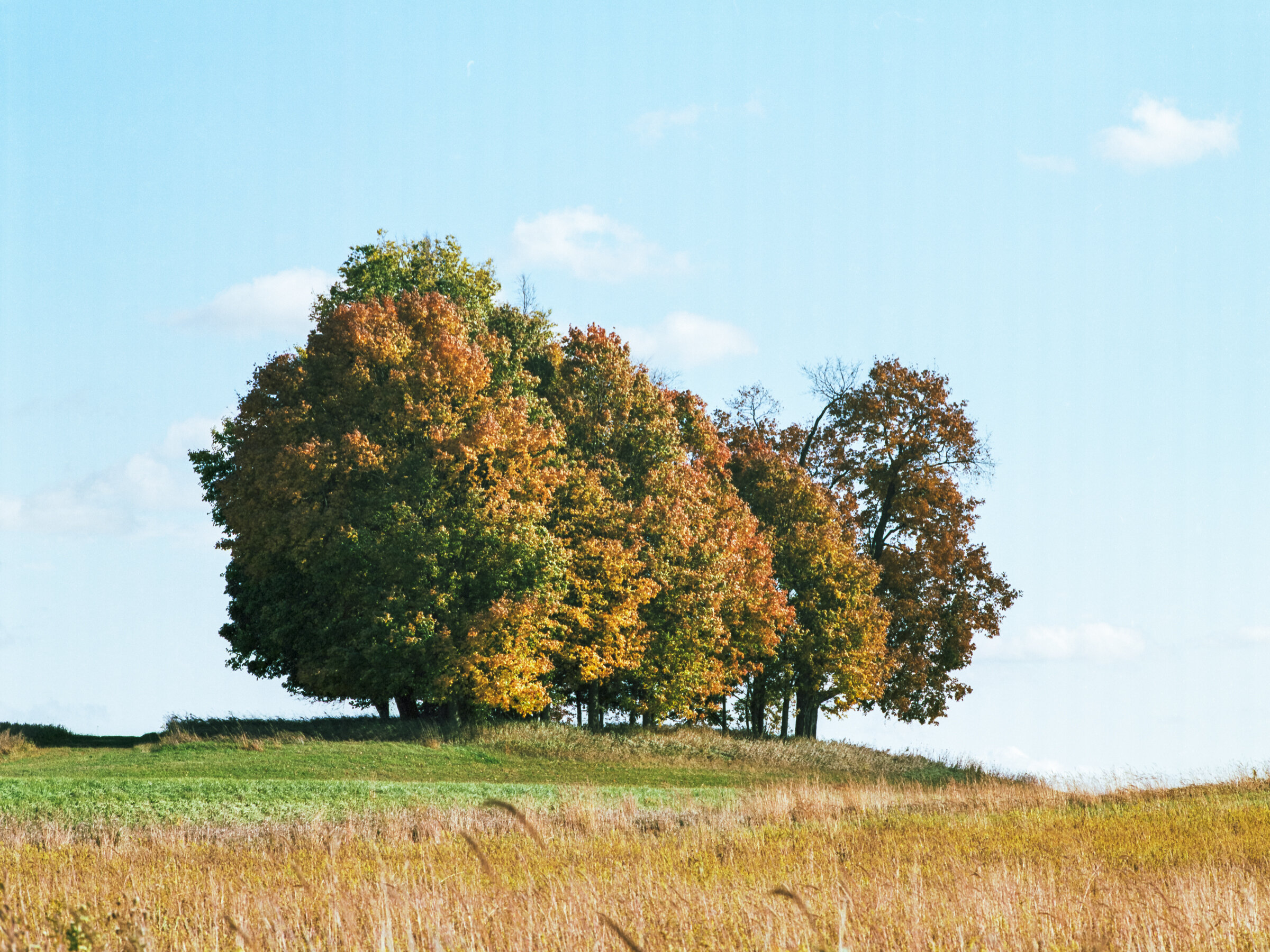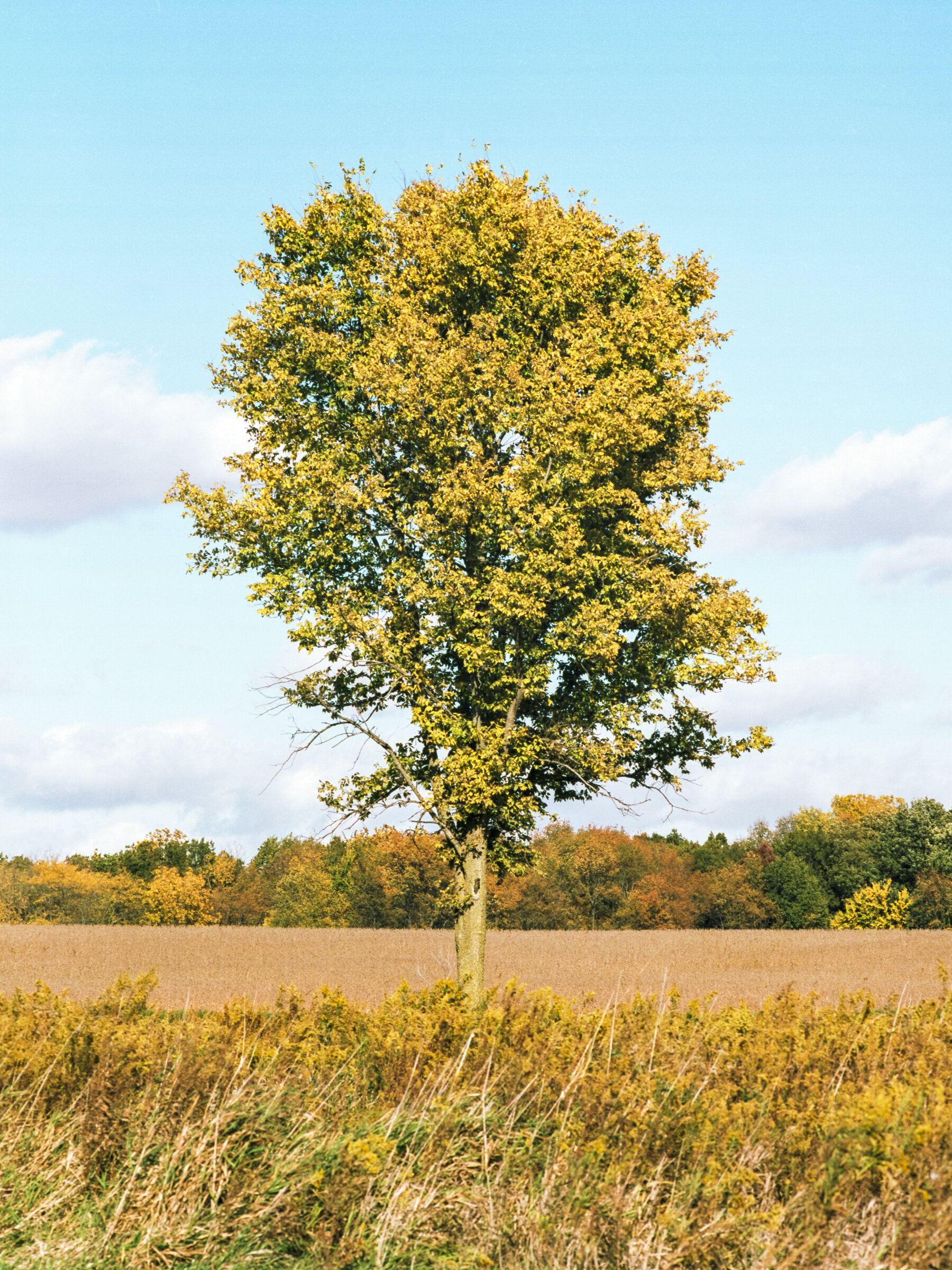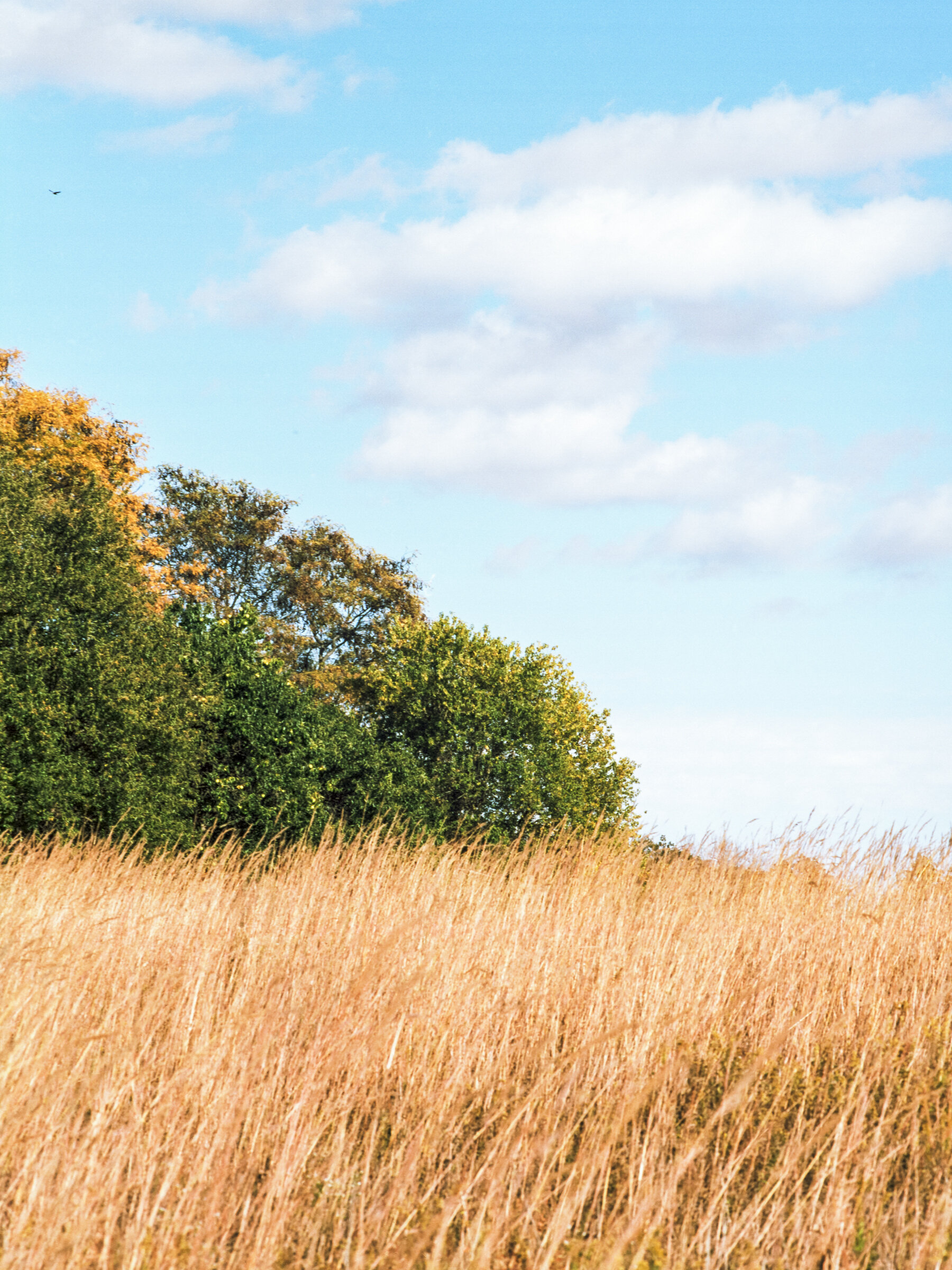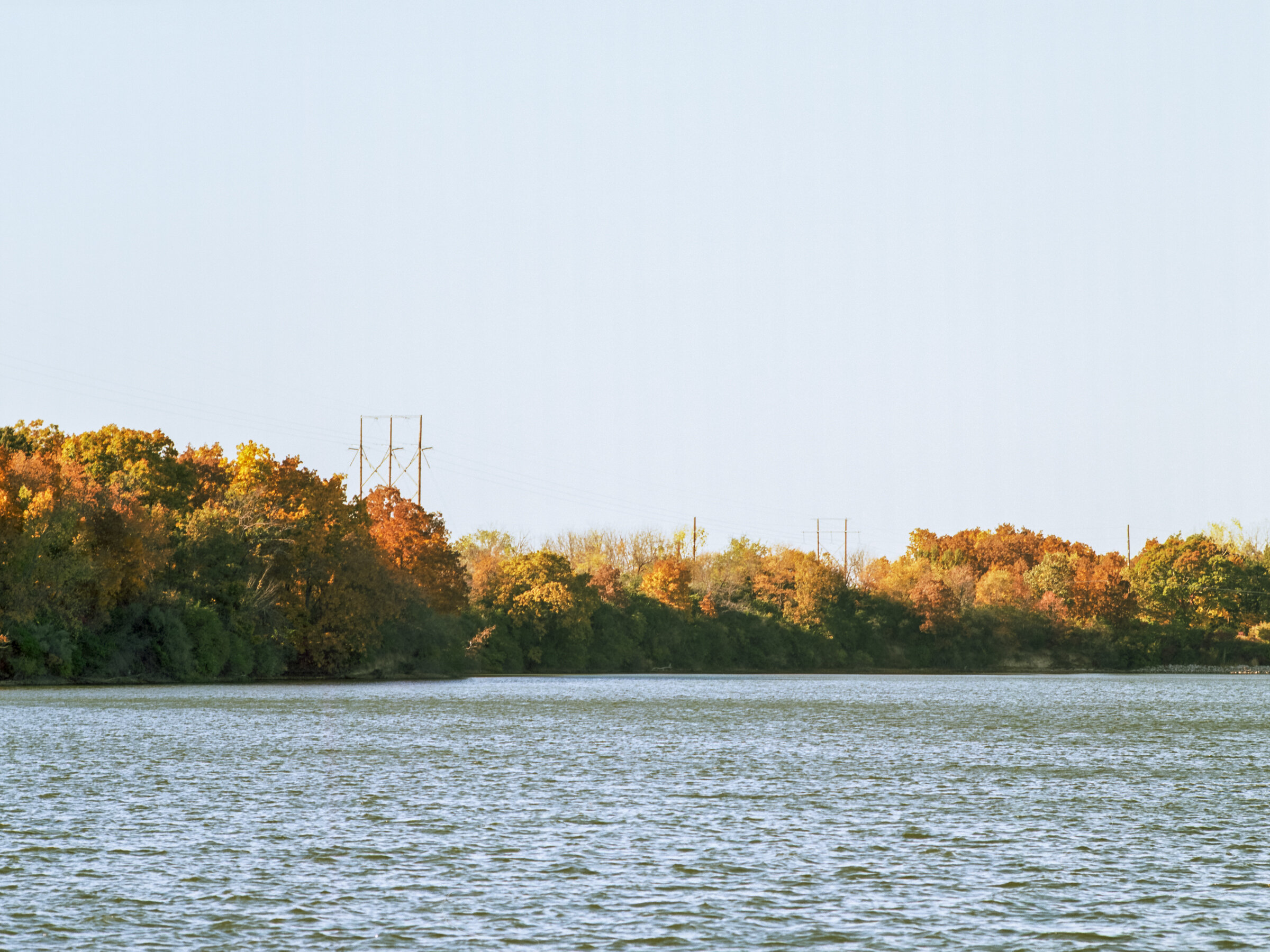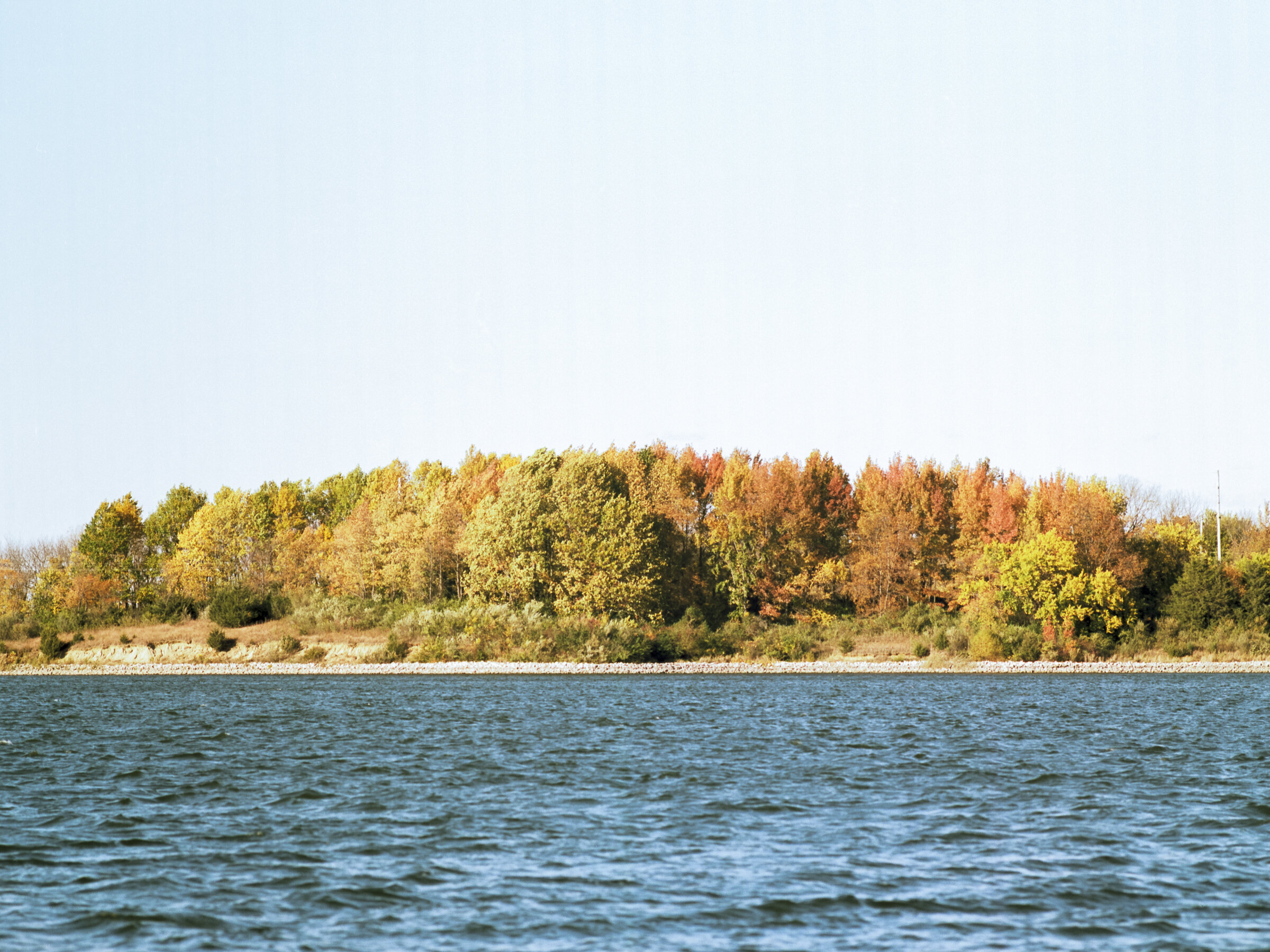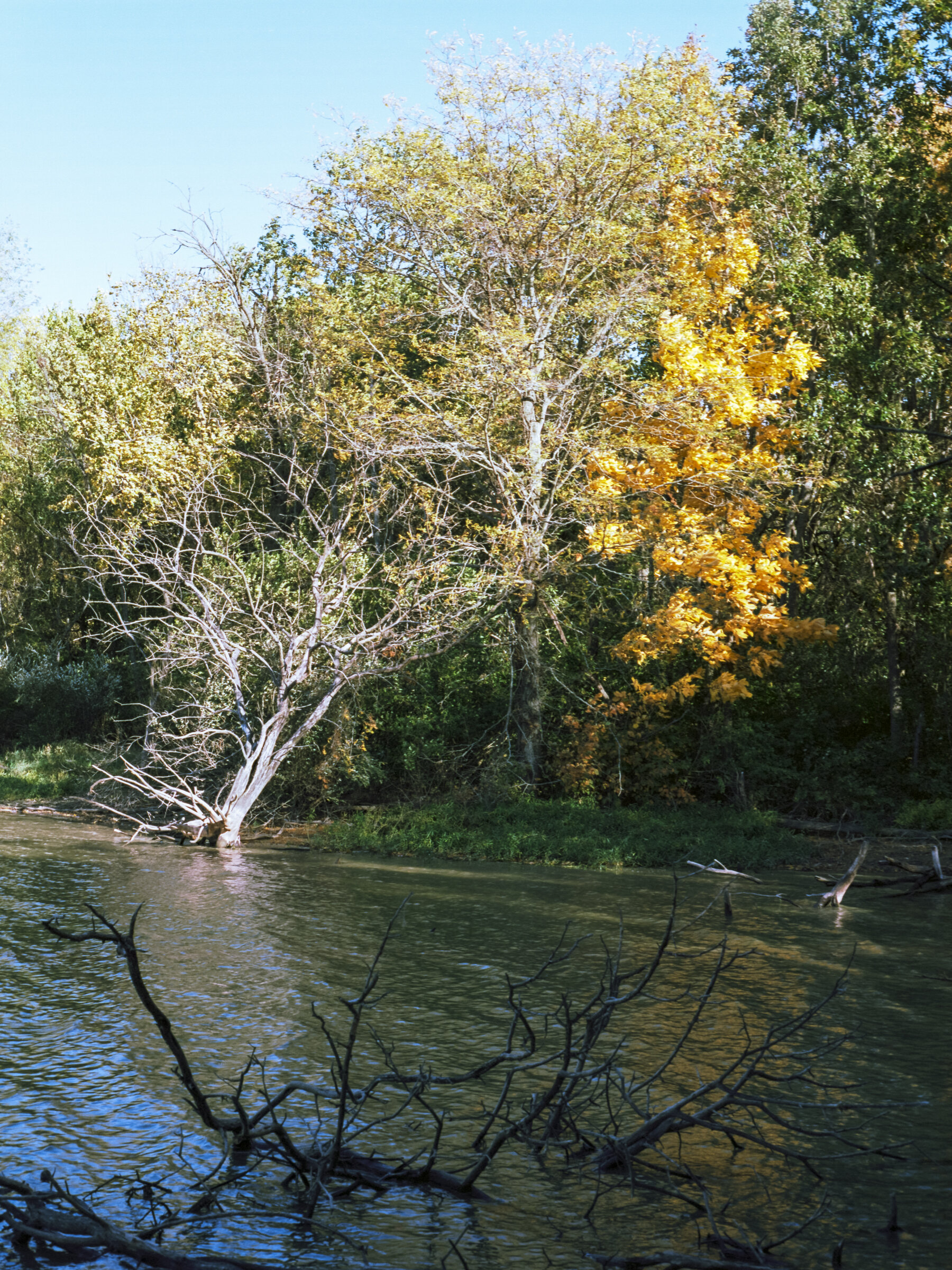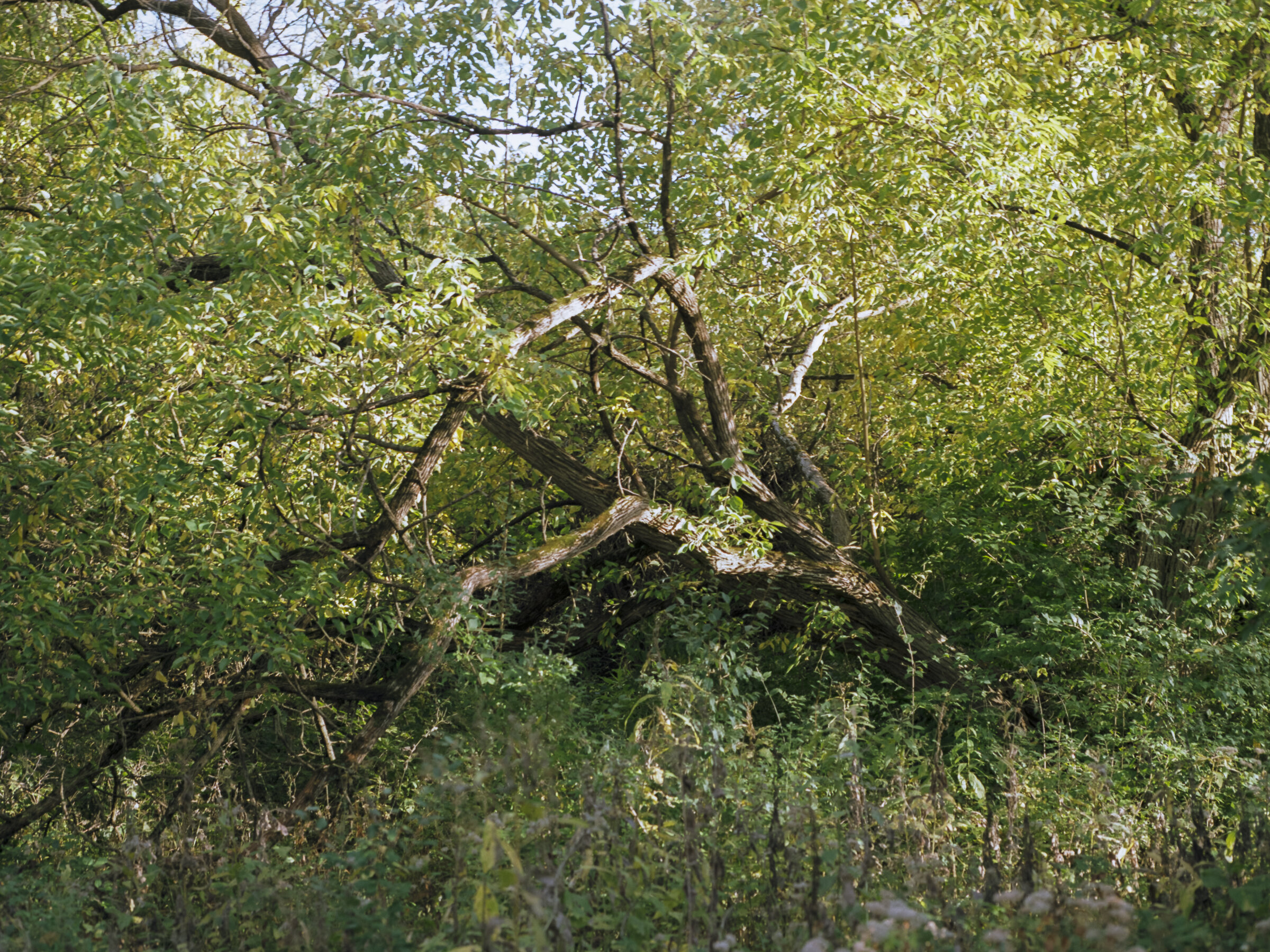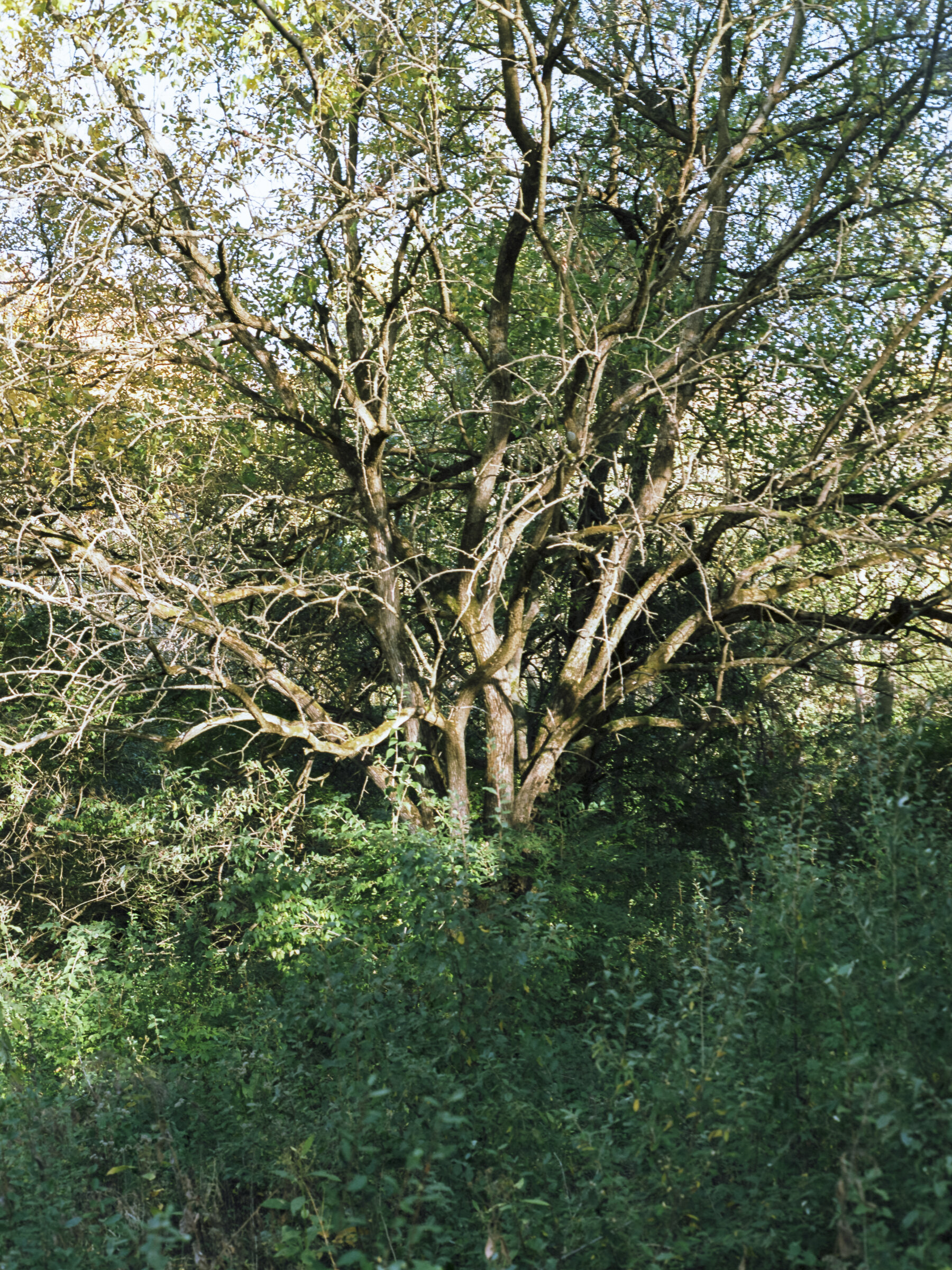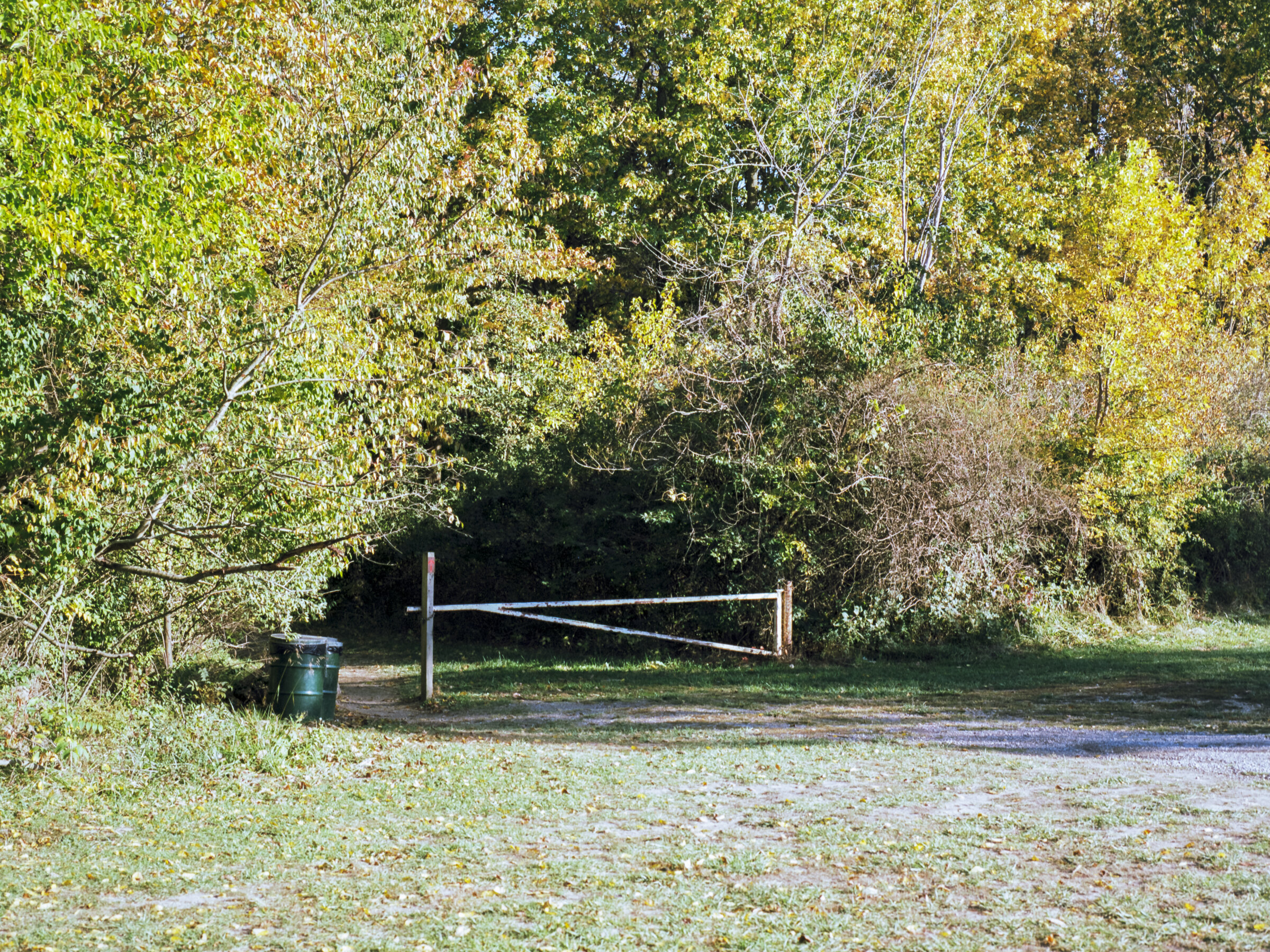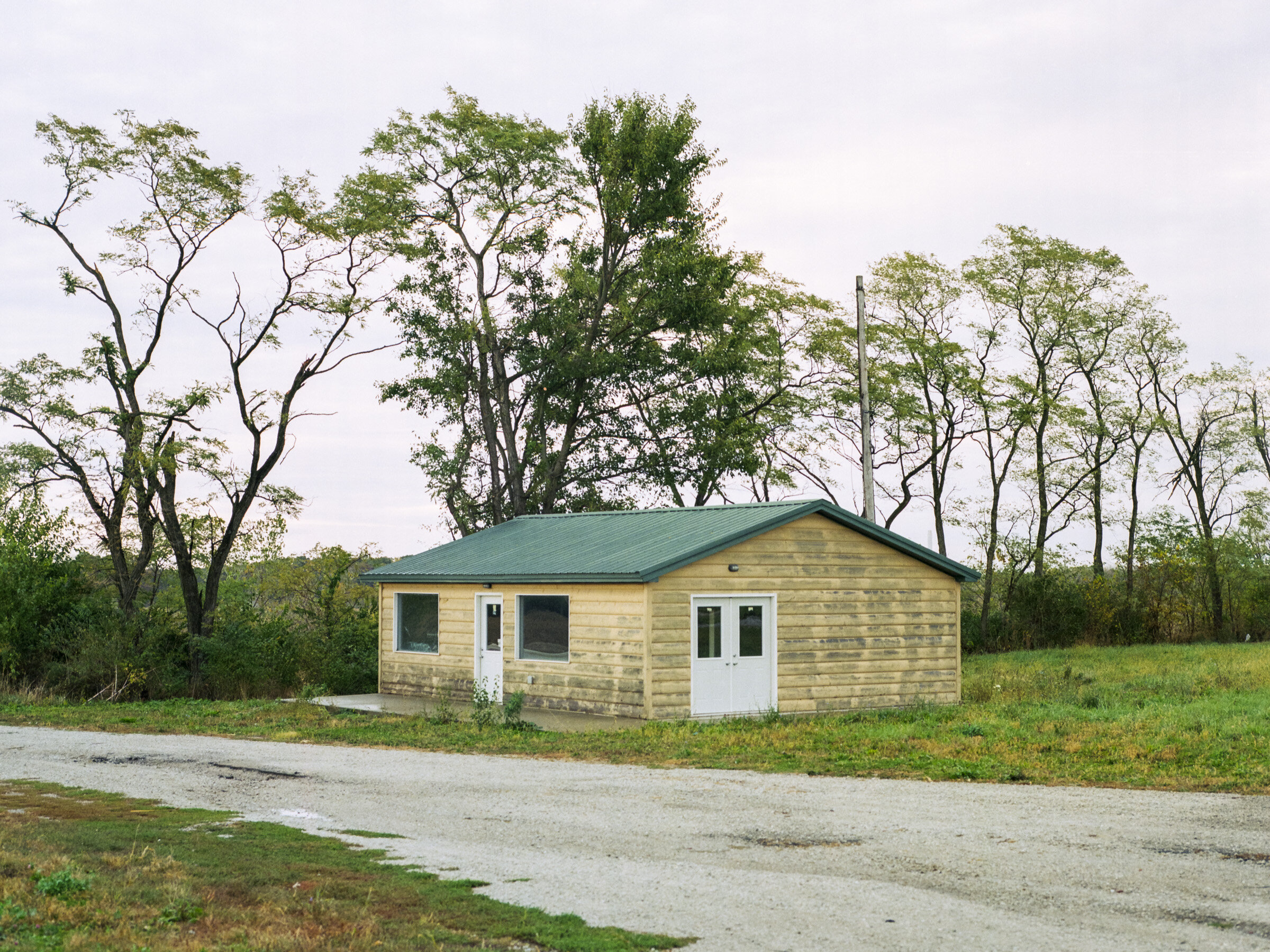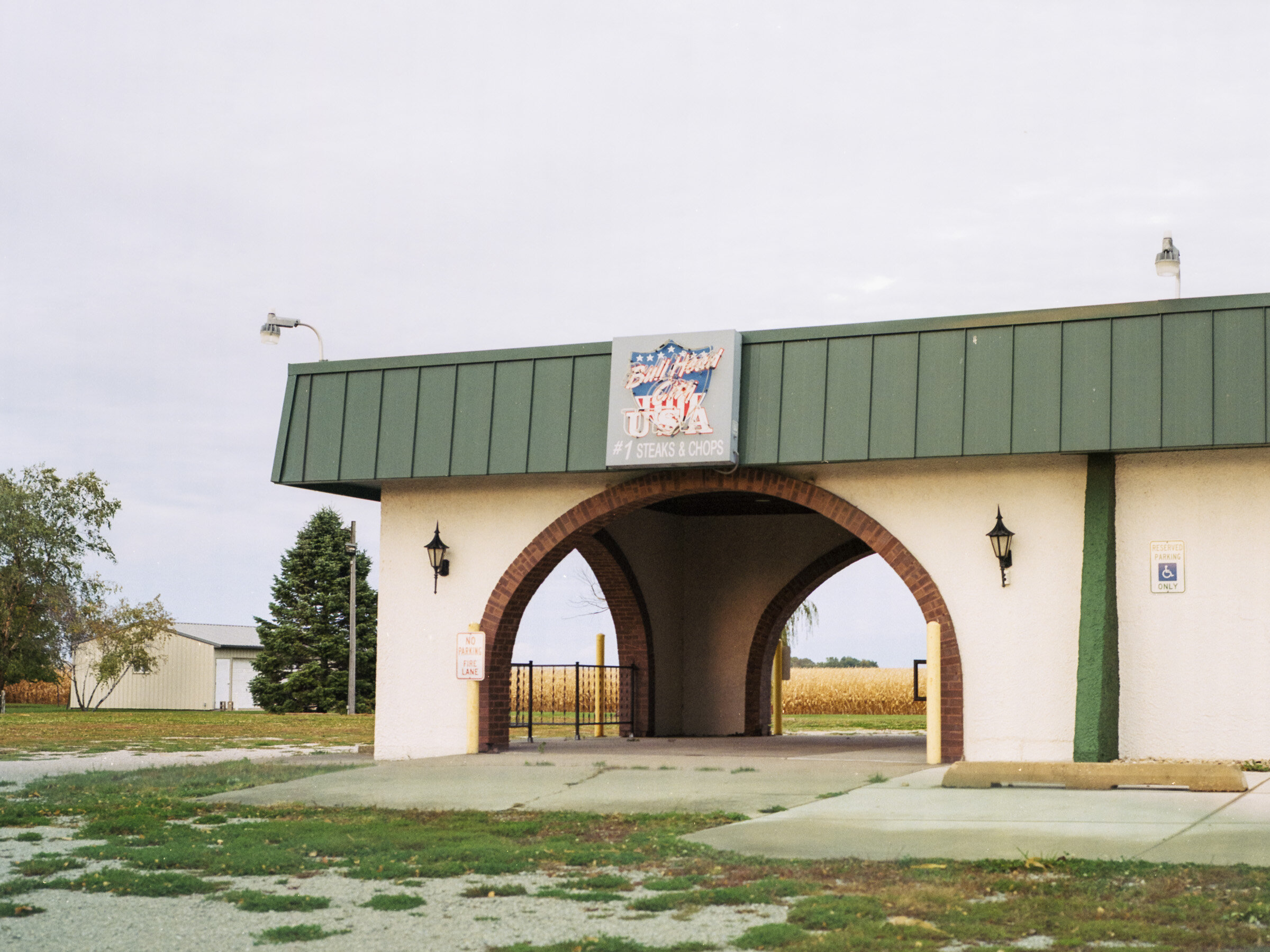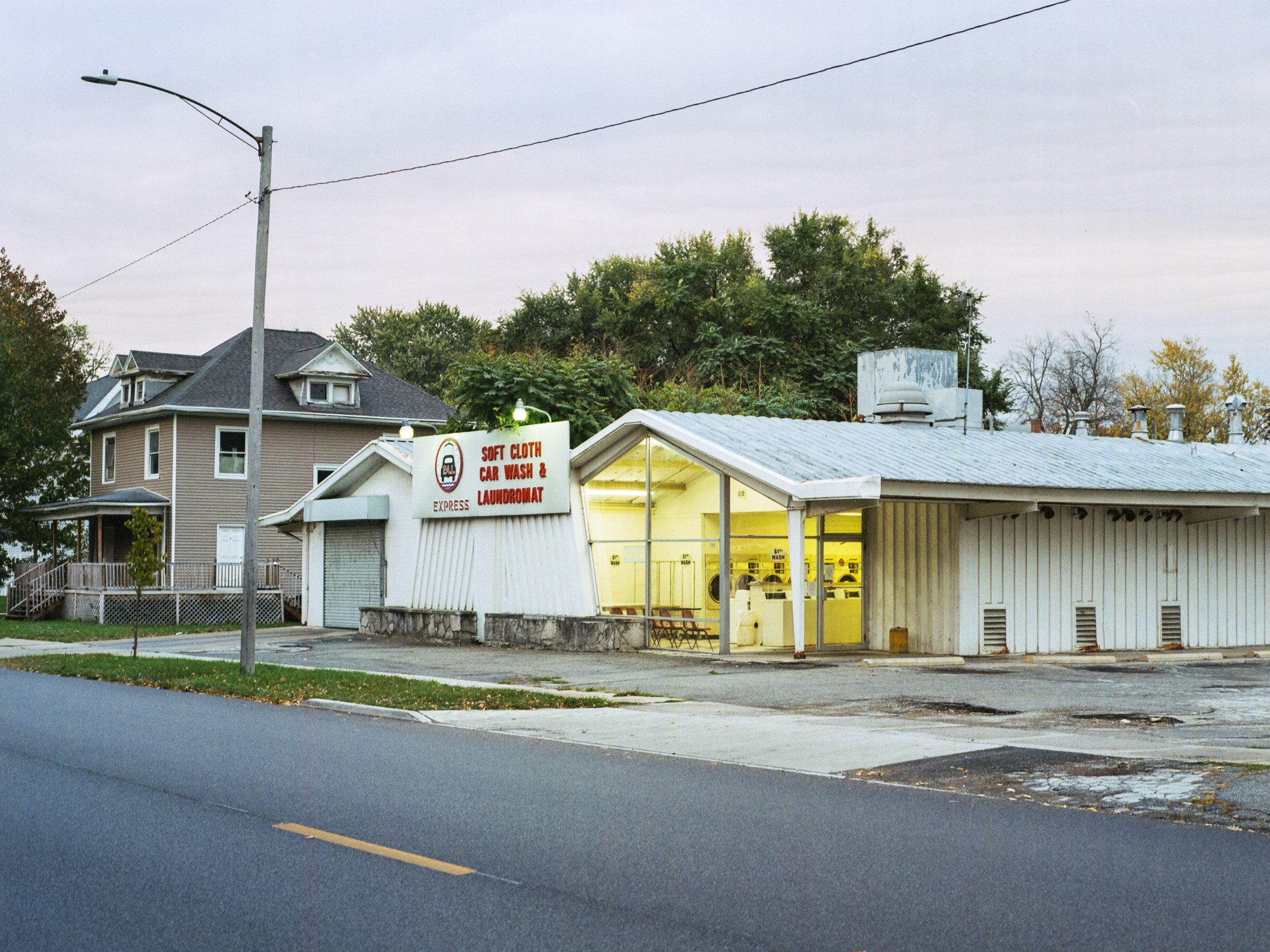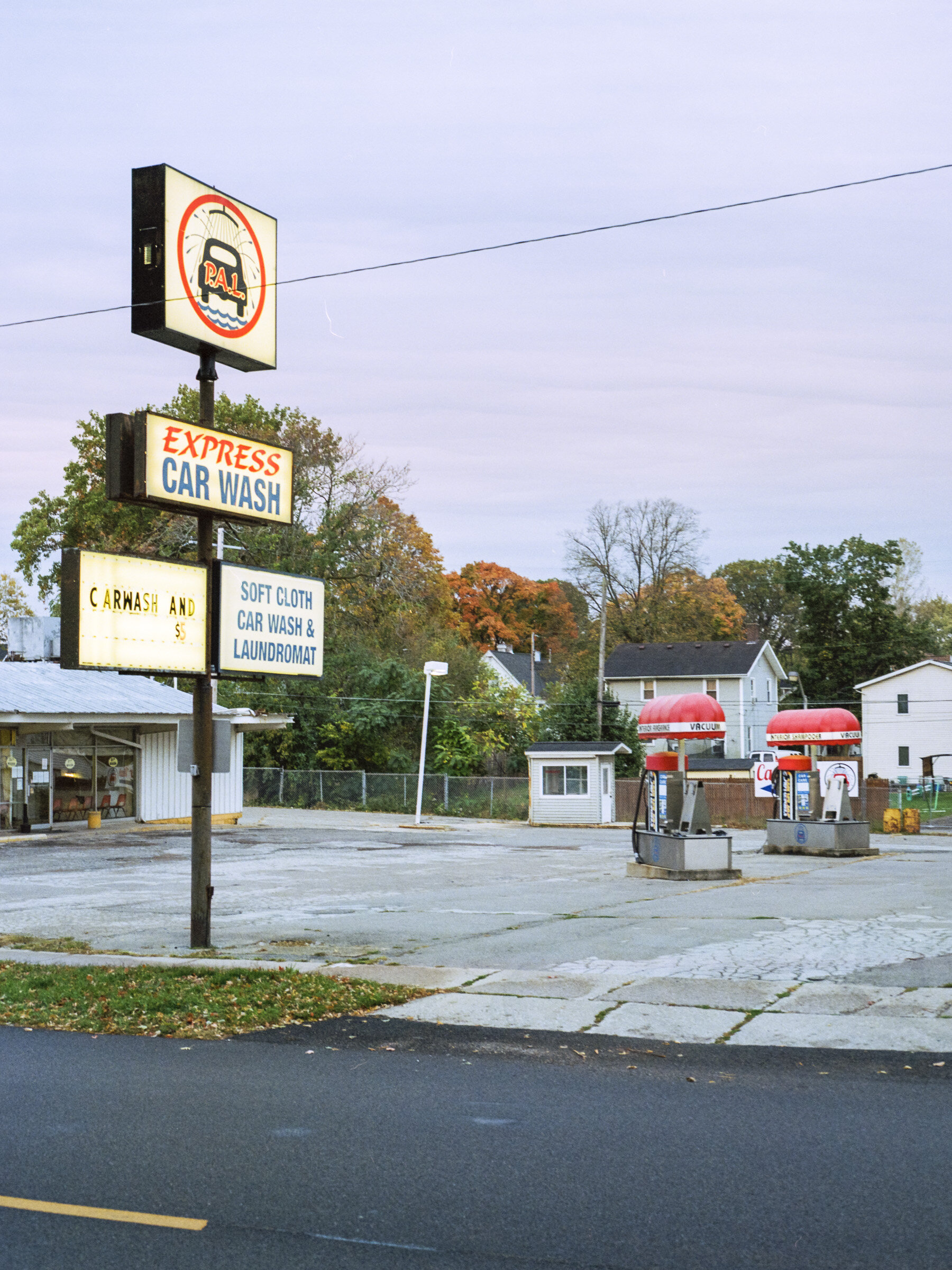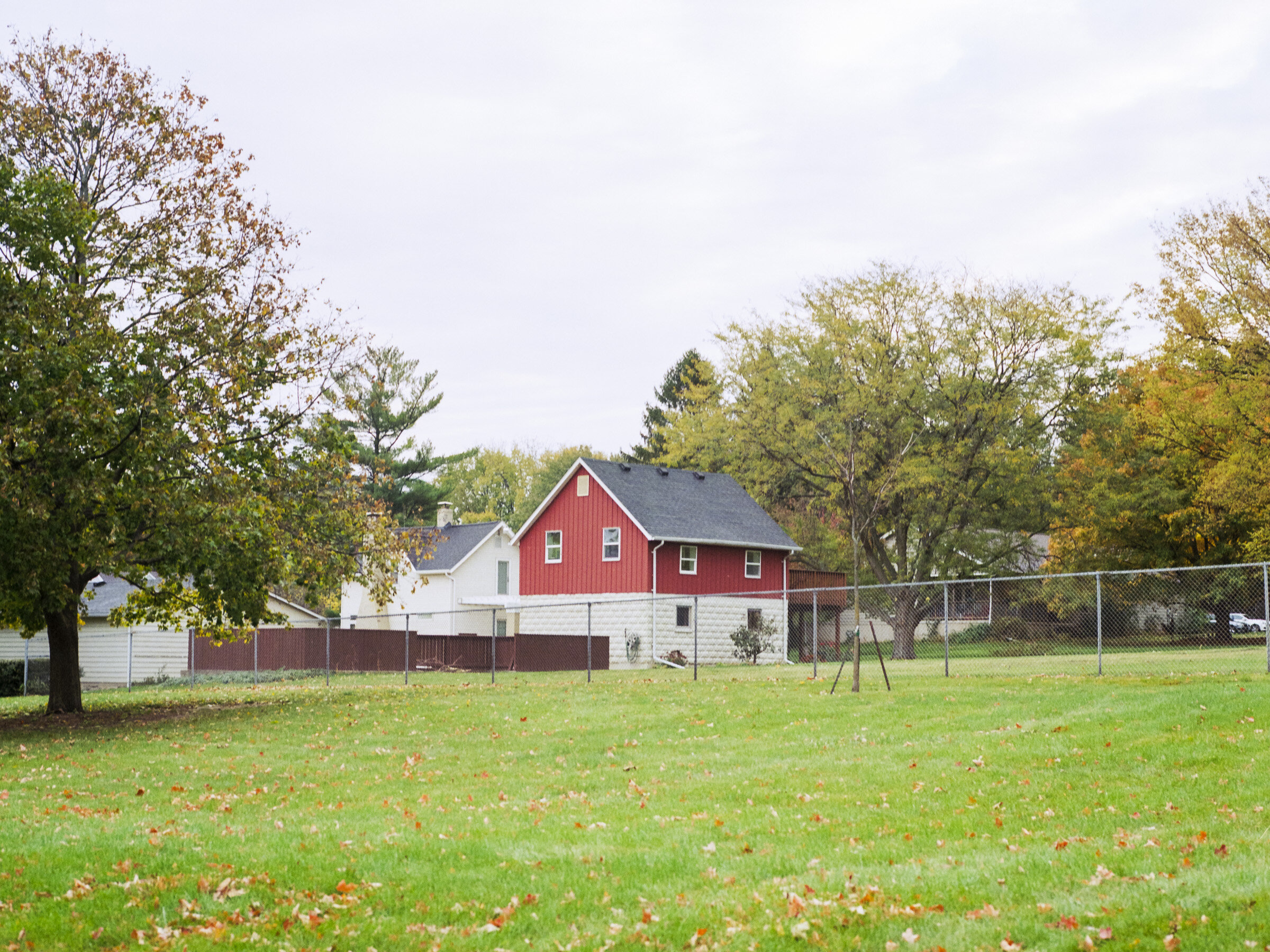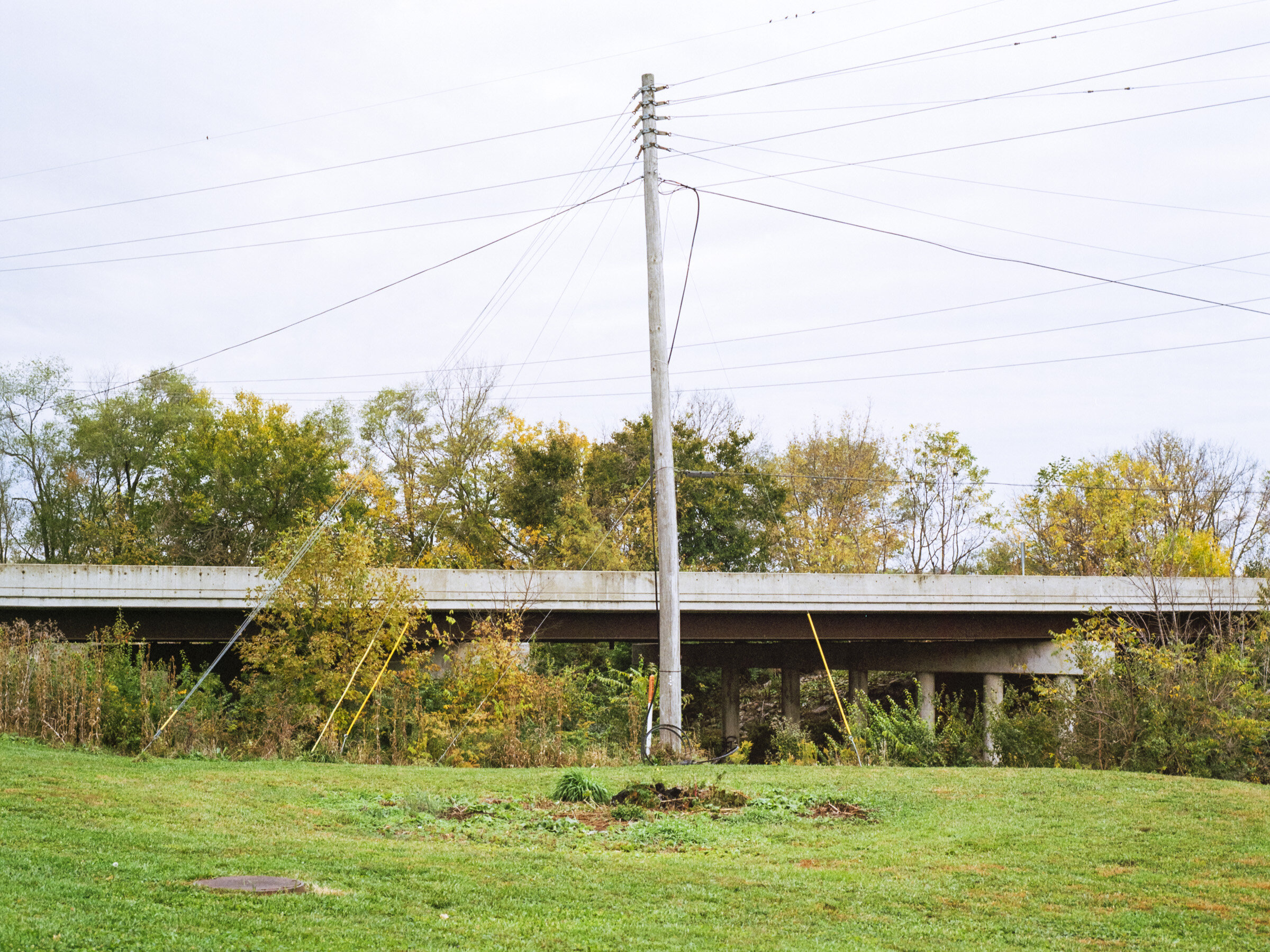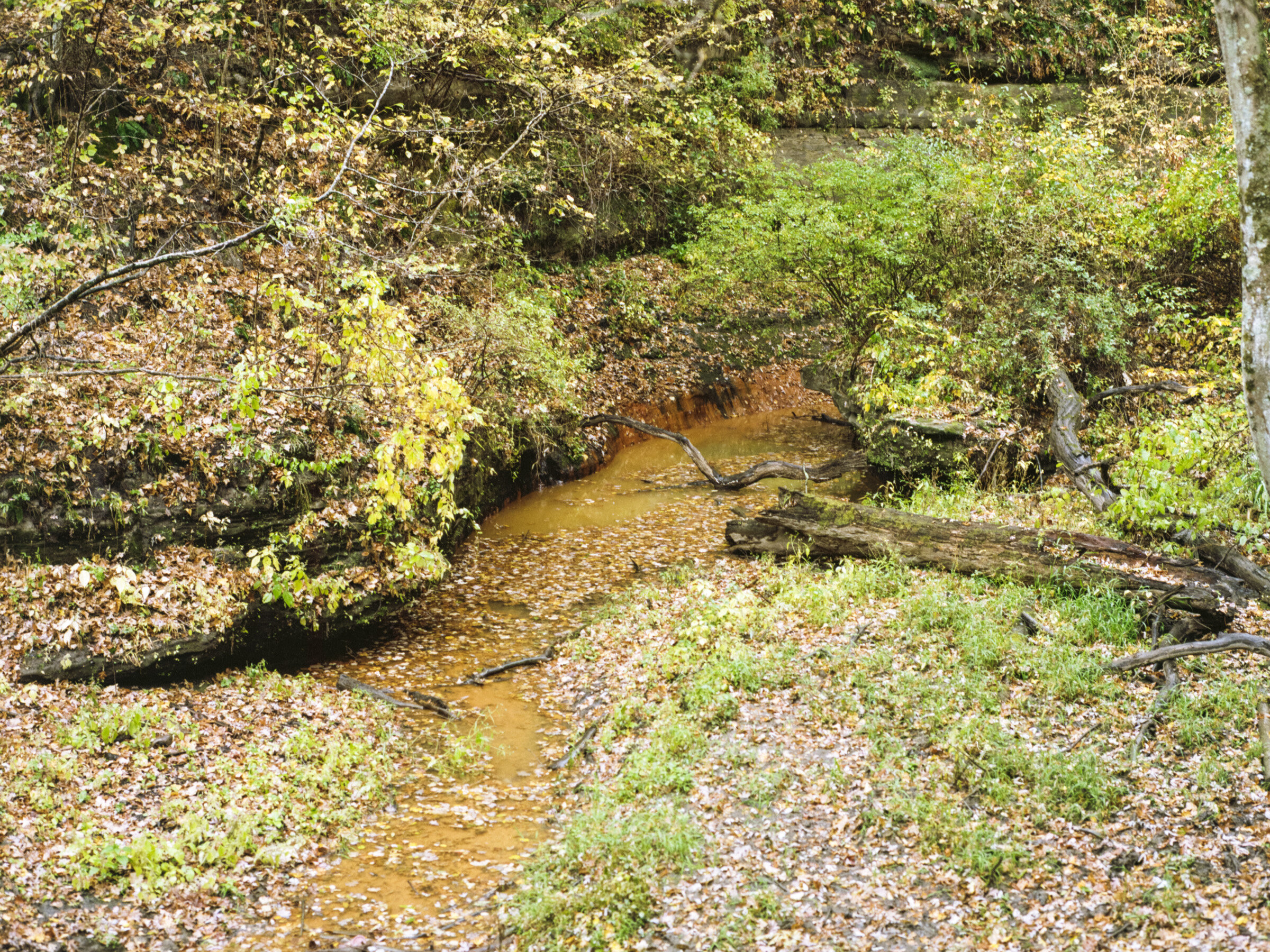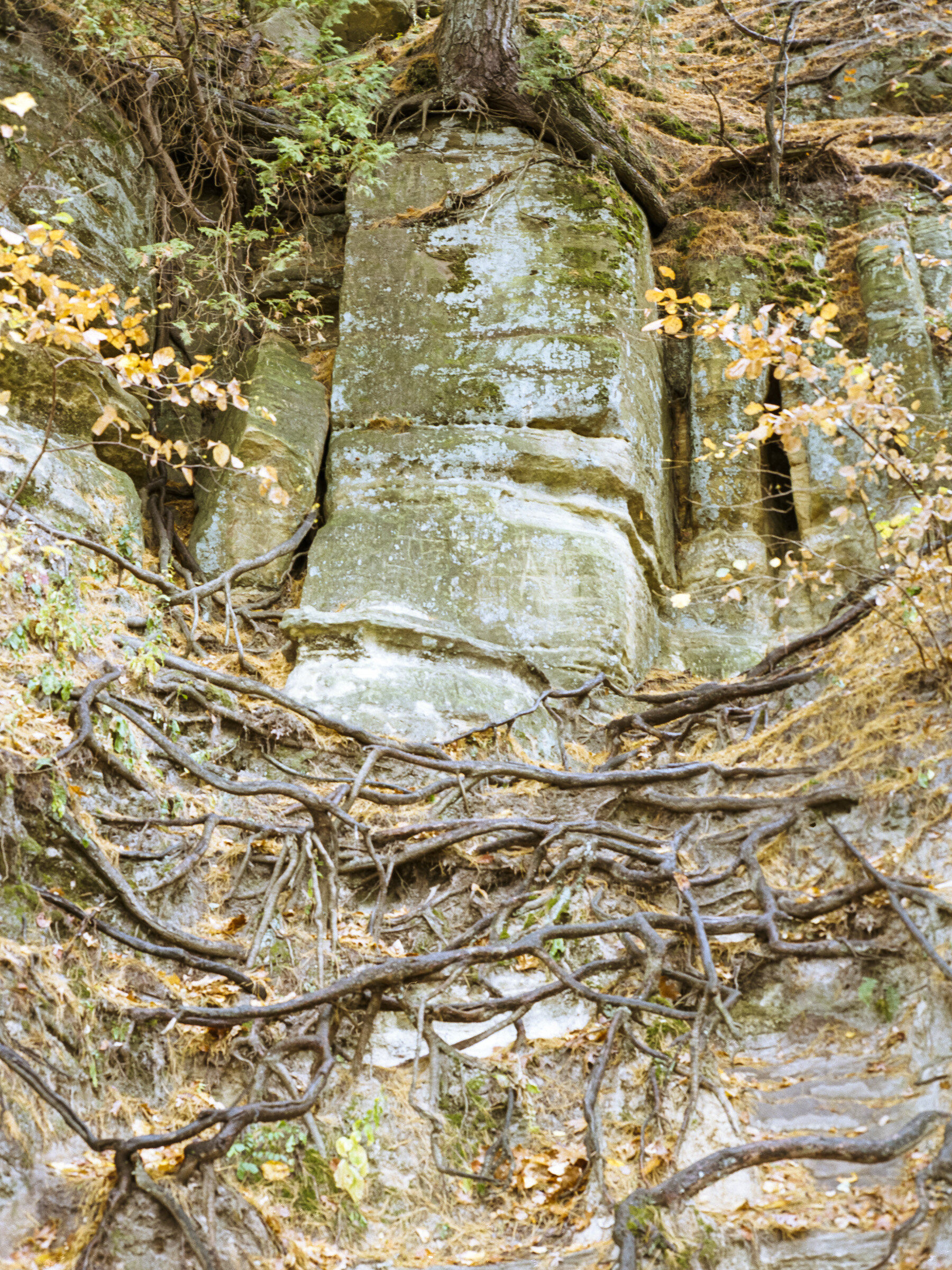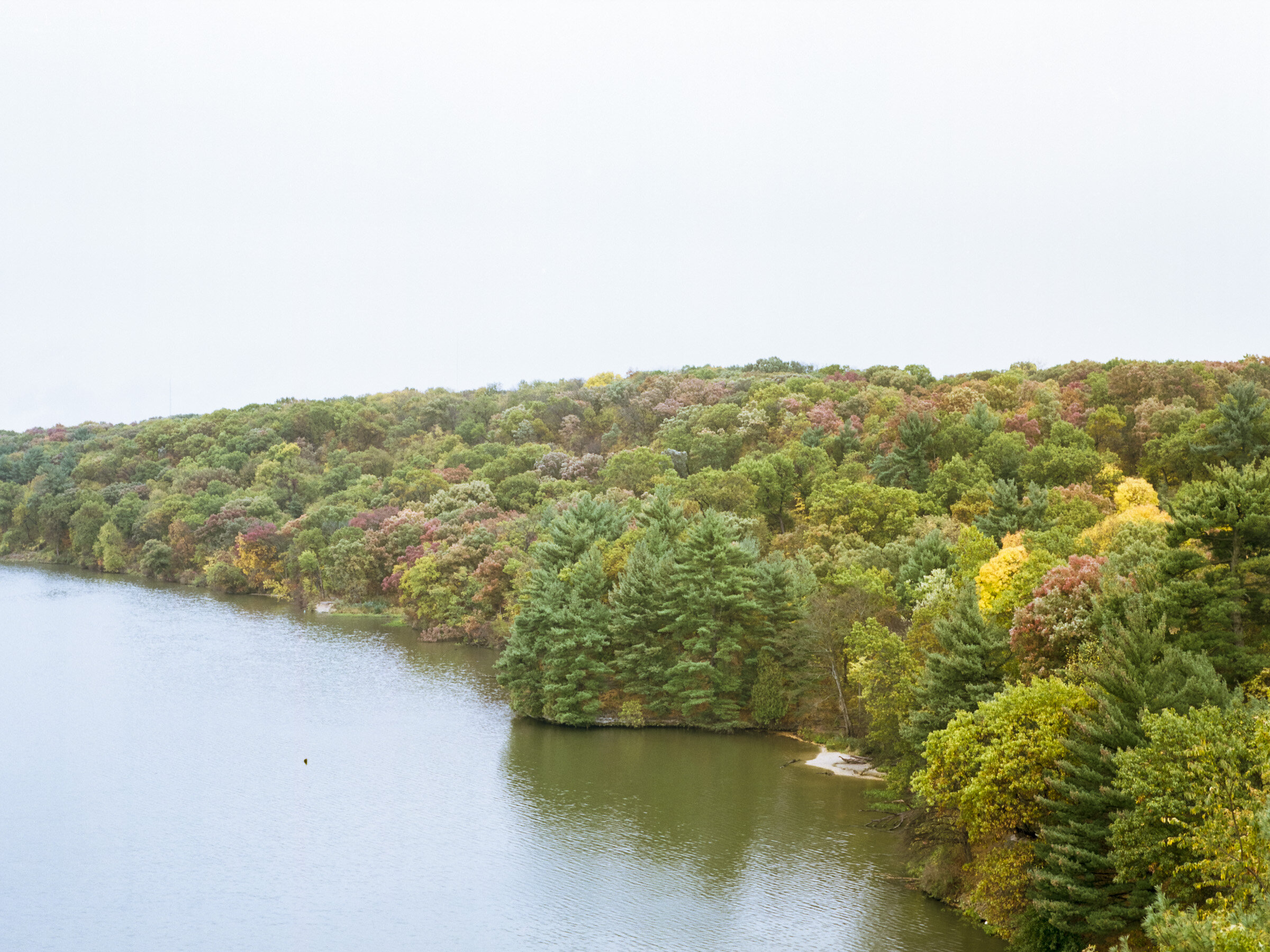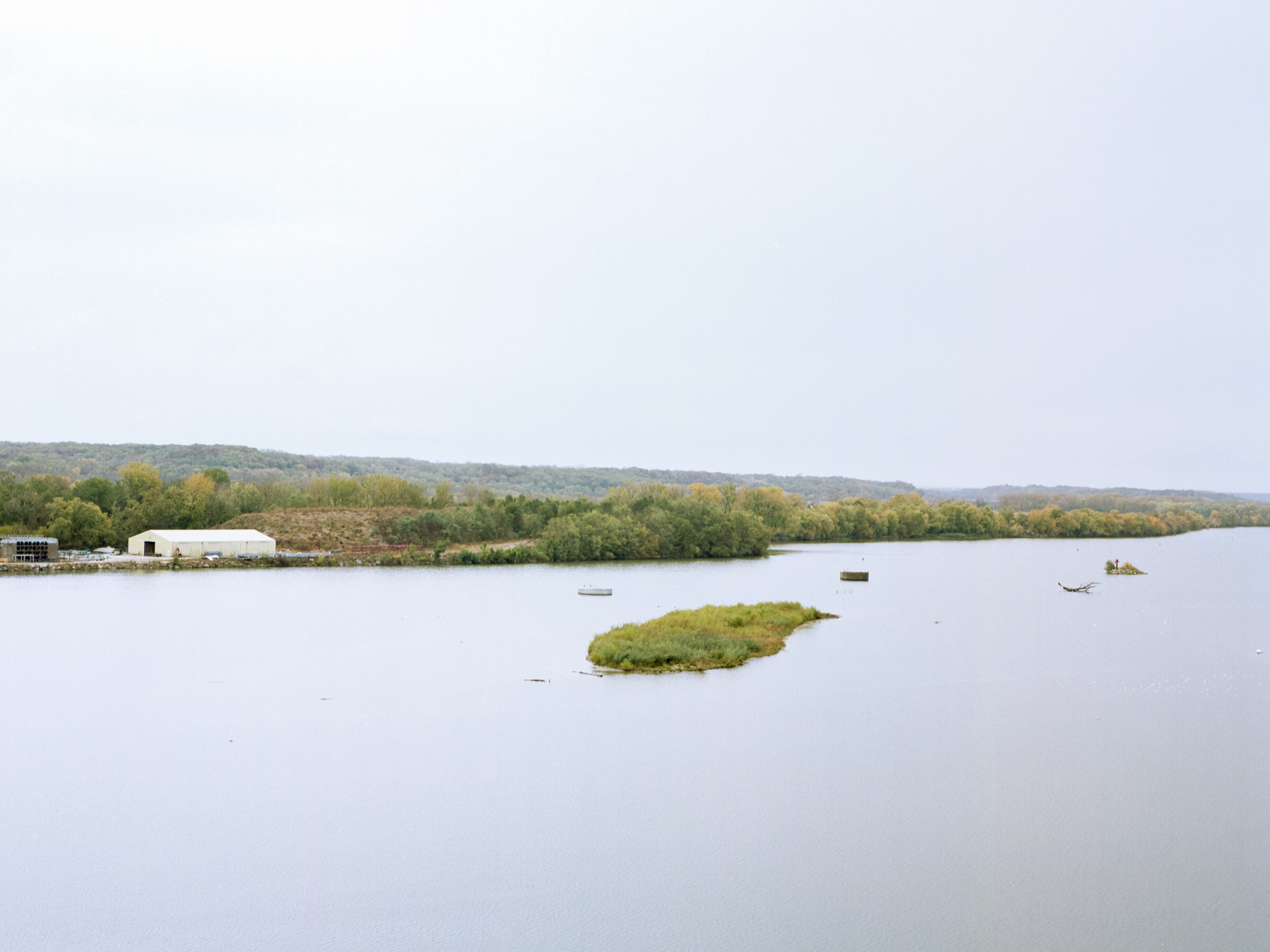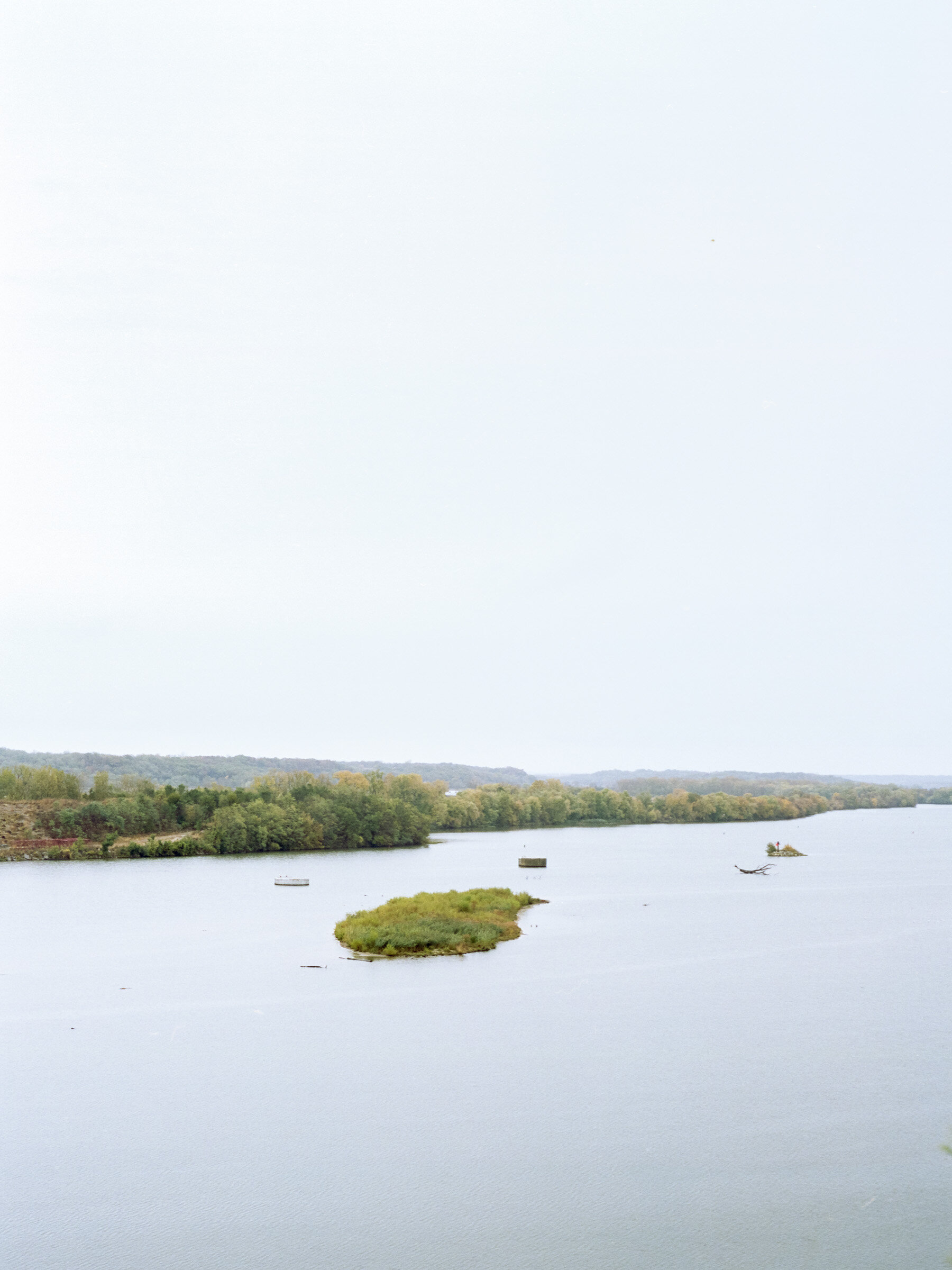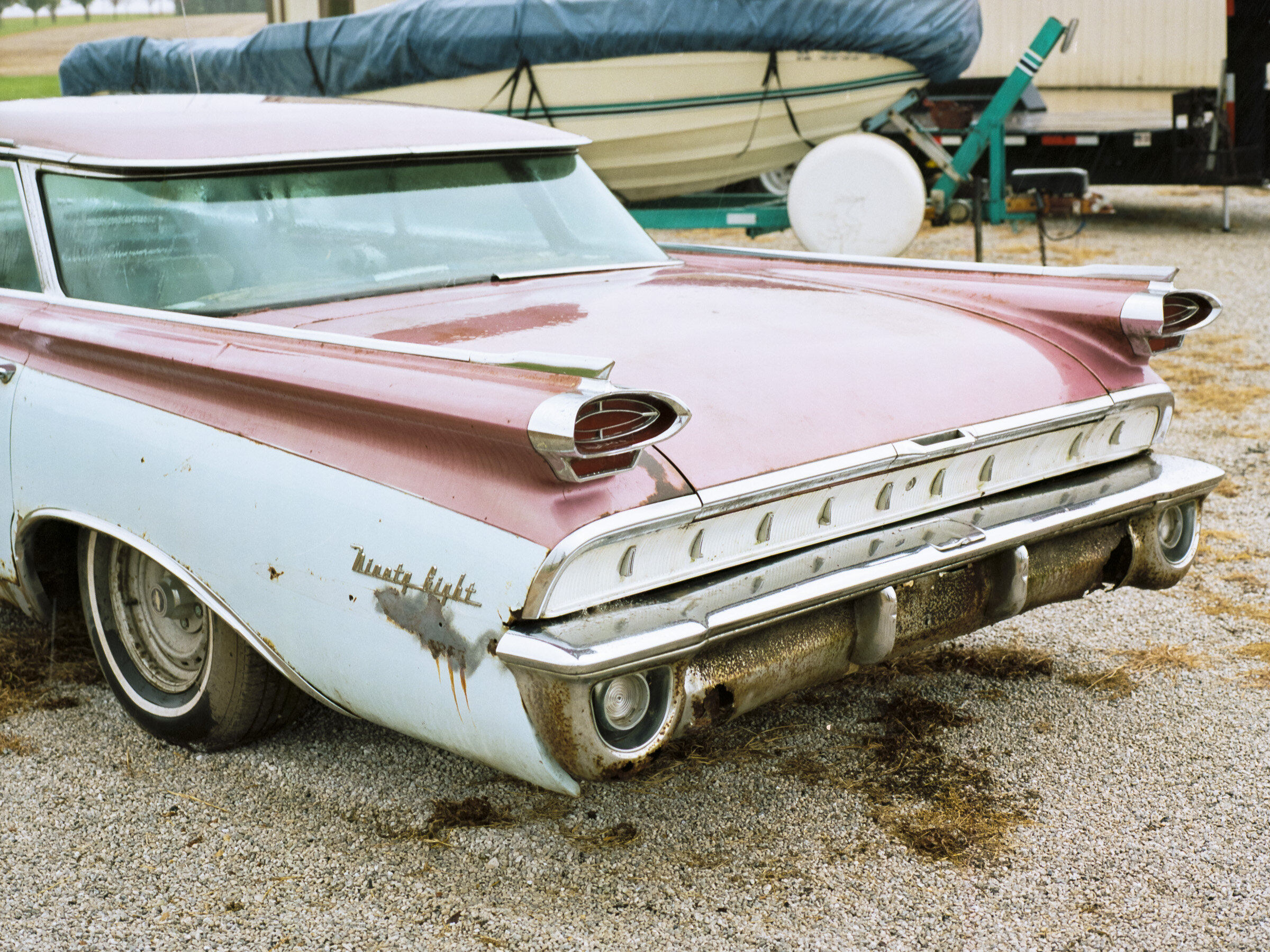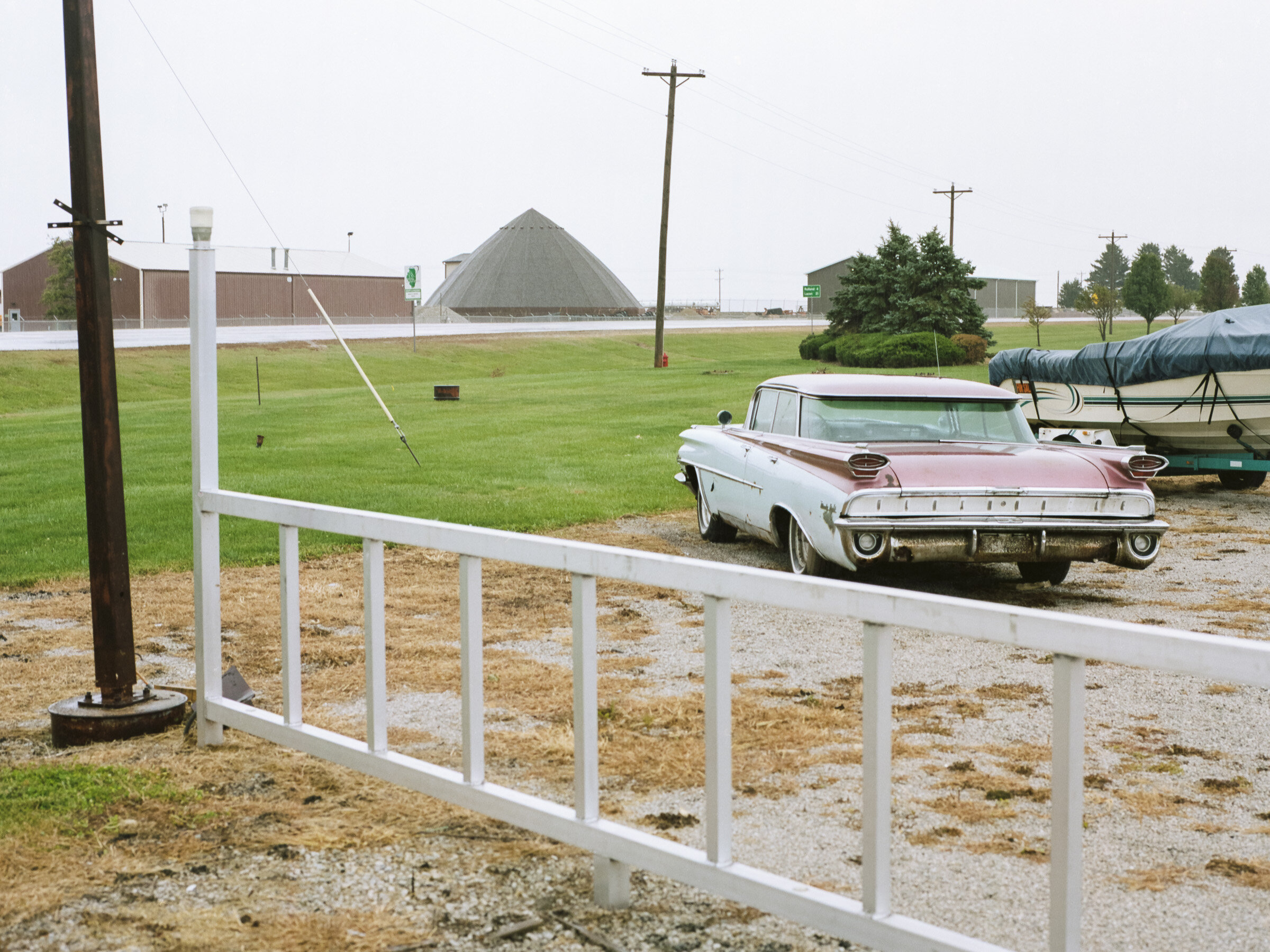I recently picked up a Mamiya 645E from a friend in Chicago. This camera is one that I was looking at before I bought the RB67 (I was also eyeing the slightly more pricey 645 Super, 645 Pro-TL among others). This camera, being a 645 size frame, produces a 54mm x 40.5mm frame, which is just over half the size of the RB 67’s 54mm x 67.5mm frame (producing what I like to call a “baby 4x5" frame, as 67 cameras do not produce 6x7 ratio frames, they produce a 4x5 ratio frame, contrary to popular belief). However, this system, being a more affordable option to the much more popular 645 Pro-TL, still uses the same lenses as it’s more popular and admittedly better sibling model.
I got the 80mm f/2.8 (about 48mm equivalent view on the long-side of 35mm) and the 200mm f/4 (about 130mm equivalent view on the long-side of 35mm). Both lenses are fantastic and offer enough versatility for me right now, however I do expect to get a wide-angle lens in the future for this little guy. I’ve used a handful of Mamiya lenses in my time, from the C330/220 line to the RB and now the 645 line, and I have yet to try the RZ-specific lenses (as that beast can take RB lenses as well). Every Mamiya lens I’ve used is mind-blowing. The sharpness, the lack of distortion and lack of vignette, it’s amazing. While I’m used to the bulky RB67 prime lens where the only things that move are the leaf shutter and the aperture blades, focusing using a bellows system, the 645 lenses do not cut corners. They offer that same Mamiya sharpness and overall high-quality one should expect from a mainstay medium format manufacturer.
Using this camera is far easier than that of my beastly RB67. I have the grip that attaches on the tripod socket, allowing a 35mm SLR-like stroke to advance and cock the shutter, however it requires a double-stroke, which does take some getting used to.
The viewfinder on this camera is a bit tighter than I’d like, however it’s not a deal-breaker. I very much prefer using an eye-level viewfinder as it offers, well, an eye-level perspective. I have found that waist-level viewfinders are handy, especially when doing traditional landscape, however this camera isn’t modular, so the viewfinder is bound to the body for eternity.
One major benefit to this camera that is likely one of the primary reasons I can see myself using this camera more frequently, is the built-in meter. There aren’t too many SLR-style medium format cameras with a built-in meter, and with that, one that’s good. This camera, as far as I know, uses a center-weighted meter, which sits nicely between evaluative (reading the whole frame and averaging out the exposure), and spot (just one small area, typically a small degree of angle to read the exposure, required pointing the camera or meter at different spots to get an accurate meter reading). The center-weighted meter allows for a much more pleasant run-and-gun feeling while also still requiring some attention. As someone who likes to wander aimlessly but take time with each shot, this kind of meter is a blessing.
However, on the topic of the meter and jumping back to the lens, as most cameras with built-in meters have, there’s a lever-like mechanic that the lens uses to tell the meter what the aperture is set to. On the 645E, or at least my copy, that little tooth-like thing that connects to the meter doesn’t always like to go in the lens like it should, so I have to manually put it in every time I switch lenses (which thankfully isn’t very often). Again, not a deal-breaker, but this is more just a nuisance.
One other gripe I have, which is an easy fix and not a con whatsoever, is using the camera on a tripod for long-ish exposures. I’m not used to the mirror-up style of tripod shooting, where you meter, focus and lock in your composition and then switch-on the “mirror-up” lock, which on this camera is mechanical, not a two-step process like the RB67. The 645E mirror-up lock is a small lever on the lower right of the camera that flips the mirror up by itself, not with the press of the shutter button like it’s bigger cousin. The small handful of longer shutter speed photos I’ve shot, being 1/30 and longer, have had noticeable softness caused by a shaking camera. While this camera doesn’t have a massive mechanical system to move around like the Pentax 67, it still has a pretty big mirror and relatively large shutter to move inside that even on a tripod, not using the mirror-up lock can cause some significant softness. Of course, once you get to a certain point in long shutter speeds, such as a minute or longer, that motion is negligible, but anything less than that, the camera may be shaking for a significant amount of time allowing softness to enter the arena.
About a week after I shot this video, I went to Starved Rock State Park in the rain to try this camera out more as well as take advantage of fall color and the rural landscape that leads to the park. There were many mistakes made with this camera, however there were still some solid images. That trip told me that this camera isn’t really well-suited to slow, tripod-oriented shooting where the RB67 is much better at. However, this camera can absolutely still work like that, it just takes a little more attention and of course using the mirror-up lock to make sure that shutter system doesn’t set off an earthquake while shooting that pristine landscape in front of the lens.
One last thing that is vital to mention for anyone looking at this camera is the film door. My friend I got this camera from “modified” (using the term loosely) the film door by placing velcro strips on the door and the body to hold the door closed. I was wondering “why bother? it’s got a lock that works perfectly fine" and then I learned the hard way why she did that. After I shot an admittedly weak photograph, I was starting to pack away the tripod the 645E was on, and lowered the tripod head too quickly, it hit the collar of the legs, and the film door popped open. My heart sank as I worried I has lost a majority of the roll in that moment. After I got the film back from developing, I was happy to see I had only lost three out of 15 shots on the roll — being that one frame before it fell, the blank I fired off, and then another photo that I didn’t really care for just to move the roll forward. However, this is something I shouldn’t rely on, because how will I know that the next time this inevitably happens I will lose only three frames?
To sum up my opinion of this camera after two weeks of use, I’m very pleased with it. I’m not surprised by its limitations, but they are limitations one should expect from a camera like this. It can’t do all that the RB67 can do, but it does a lot of things that the RB67 cannot do, as well. It’s a much better camera for walking around than the RB, and much more well-suited to long-term travel as well as casual walks and short drives. The RB is a much better camera for that slower work, be it on a tripod or not. I highly recommend any medium format photographer to pick up a 645 camera if you’ve been considering it and haven’t pulled the trigger yet. I believe it’s a vital tool to have, and offers a much more casual way of shooting those juicy medium format negatives.

